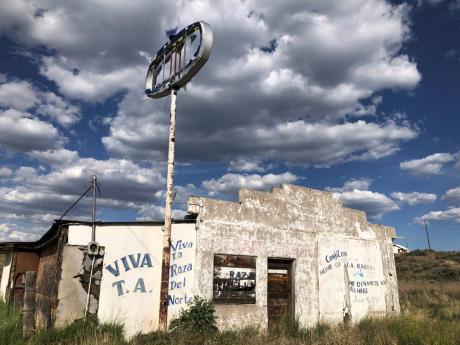Monuments and statues are falling – but what comes next?
The dusty town of Tierra Amarilla perches in the shadows of the Sangre de Cristo Mountains. Here, five decades ago, this poor northern New Mexico community saw one of the most violent clashes in civil-rights history when armed Mexican American ranchers raided a courthouse in a dispute over land grants. It shocked the nation and helped trigger the Chicano Movement.
Today, there’s almost nothing in town to honour this historic moment, except for graffiti art on an abandoned gas station and a sentence on a marker. There’s also almost no public art about the event anywhere.
As monuments and statues fall across the United States (US), activists and towns are left wondering what to do with empty spaces that once honoured historic figures tied to Confederate generals and Spanish conquistadors. They also are debating how to remember civil-rights figures and events in areas where they have been forgotten.
The opportunity to reimagine spaces has created a debate: whose history should the US now honour, and why? Should anything go on those empty podiums at all?
Some advocates say monuments to the late US Rep Barbara Jordan or Mexican American civil-rights leader Dolores Huerta should replace the fallen statues. Others say World War II Marine Sgt Miguel Trujillo Sr, a member of the Isleta Pueblo who sued to get Native Americans the right to vote in New Mexico, or former slave-turned-abolitionist Olaudah Equiano should have monuments erected in their honour. Christy Symington, a London-based sculptor, has already created an image of Equiano that some advocates say should be replicated in now empty spaces.
LEFT THERE
“I almost think the pedestals just need to be left there (empty),” said Rev Rob W. Lee, a senior pastor of Unifour Church in Newton, North Carolina, and a descendant of Confederate Gen Robert E. Lee who now speaks out against Confederate monuments.
Lee said he sees the toppling of Confederate statues with Black Lives Matter graffiti as a move to reclaim black lives from white supremacy. “I think it’s quite beautiful,” Lee said. “Leave it like that.”
Brett Chapman, a Tulsa, Oklahoma, attorney and descendant of Standing Bear, a Ponca chief and civil-rights leader, said he’d like to see the fallen statues replaced by largely unknown social-justice advocates. “There are so many people we can honour that will show how we’ve overcome oppression,” Chapman said. “It’ll be a chance for us to learn and reflect.”
On Saturday, protesters in Baltimore pulled down a statue of Christopher Columbus and threw it into the city’s Inner Harbor. That followed other episodes of Confederate and Spanish colonial statues getting toppled last month by demonstrators or after officials ordered their removal.
It’s also led to statues of Presidents George Washington and Ulysses S. Grant getting vandalised.
That has given some supporters of anti-racism protests pause. Cultural critic Thomas Chatterton Williams, the author of Self-Portrait in Black and White, said he understood the need to remove Confederate monuments but is uncomfortable with the vandalism of statues honouring the founding fathers and American Union Civil War figures.
“Mobs in the street tearing down Ulysses S. Grant statues is a really chilling sight,” Williams said. “We should understand the context (of history). But erasing these men from the public sphere seems like a bad road to go down to me.”
Vanessa Fonseca-Chávez, an assistant English professor at Arizona State University and author of the upcoming book Colonial Legacies in Chicana/o Literature and Culture: Looking Through the Kaleidoscope, said she can see the spaces honouring people who are not famous.
“What about the people who are living and breathing right now who made this place what it is today?” Fonseca-Chávez said. “Not a famous person. Just who we are. I think that could go a long way.”
– AP

